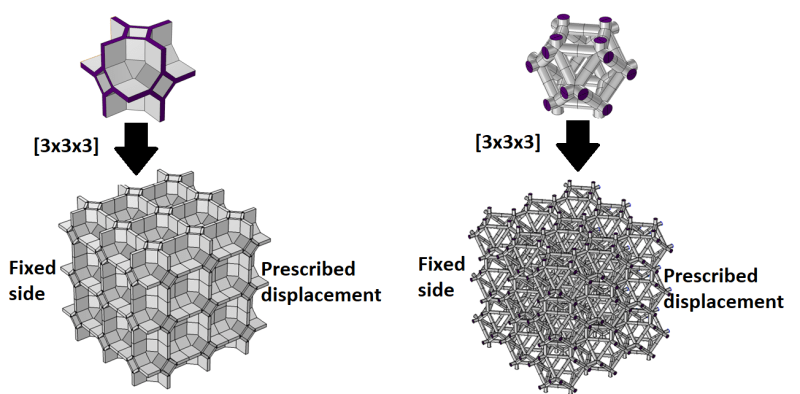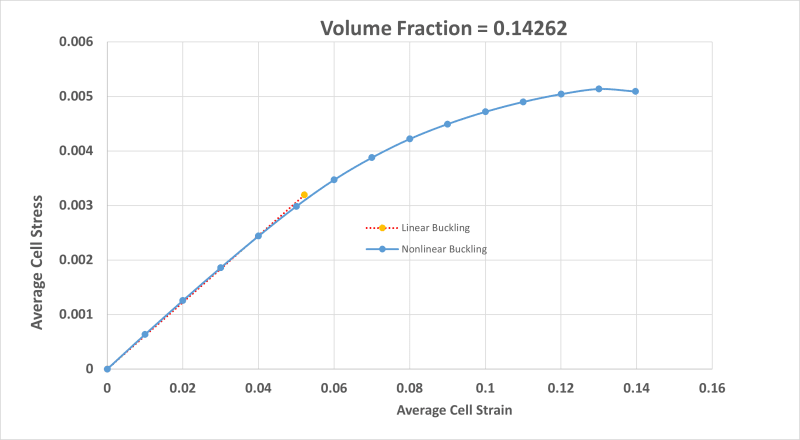I did extensive work on the unit cells where I find the youngs modulus, bulk moduli, degree of isotropy, buckling and yield strength. I then modelled two [3x3x3] structures of these unit cells where instead of using linear material model I use hyperelastic material model and enabled geometric nonlinearities in my FEA model.

Due to time limitations I cant do as much work on the [3x3x3] structure, but I did a bunch of linear and nonlinear analyses where the models are fixed on one side, and compressed with a displacement load. What I have are many curves similar to the one below; the blue curve is the average stress/strain data for the nonlinear buckling, and red dotted line with yellow point is the buckling stress and strain value at which it buckles in my linear model. I have this kind of curve for varying thicknesses (volume fractions). So I can see how the data changes as the thickness of the walls in the model changes. Any suggestions on what I could do with all these stress strain curves for many different model thicknesses?

Edit: Forgot to mention that the unit cell is supposed to represent the smallest piece of a structure that goes on infinitely, so it would be surrounded by similar unit cells on all sides and therefore the boundary conditions would differ of the [3x3x3] structure that is only fixed on one side.

Due to time limitations I cant do as much work on the [3x3x3] structure, but I did a bunch of linear and nonlinear analyses where the models are fixed on one side, and compressed with a displacement load. What I have are many curves similar to the one below; the blue curve is the average stress/strain data for the nonlinear buckling, and red dotted line with yellow point is the buckling stress and strain value at which it buckles in my linear model. I have this kind of curve for varying thicknesses (volume fractions). So I can see how the data changes as the thickness of the walls in the model changes. Any suggestions on what I could do with all these stress strain curves for many different model thicknesses?

Edit: Forgot to mention that the unit cell is supposed to represent the smallest piece of a structure that goes on infinitely, so it would be surrounded by similar unit cells on all sides and therefore the boundary conditions would differ of the [3x3x3] structure that is only fixed on one side.
